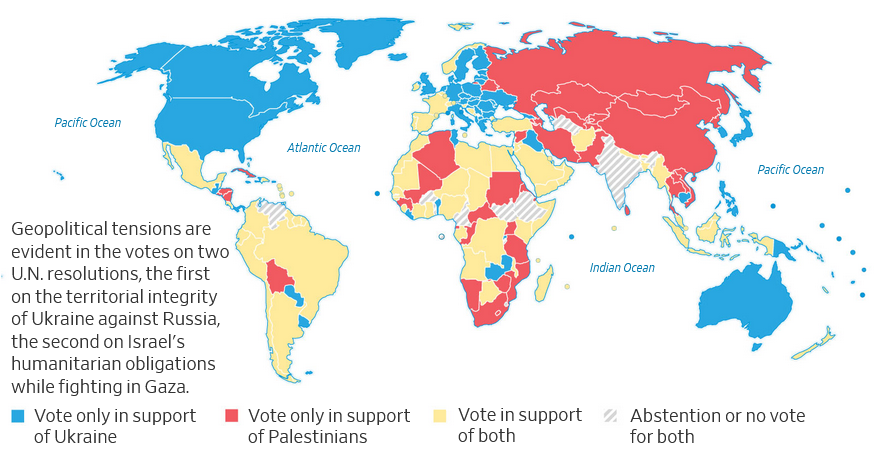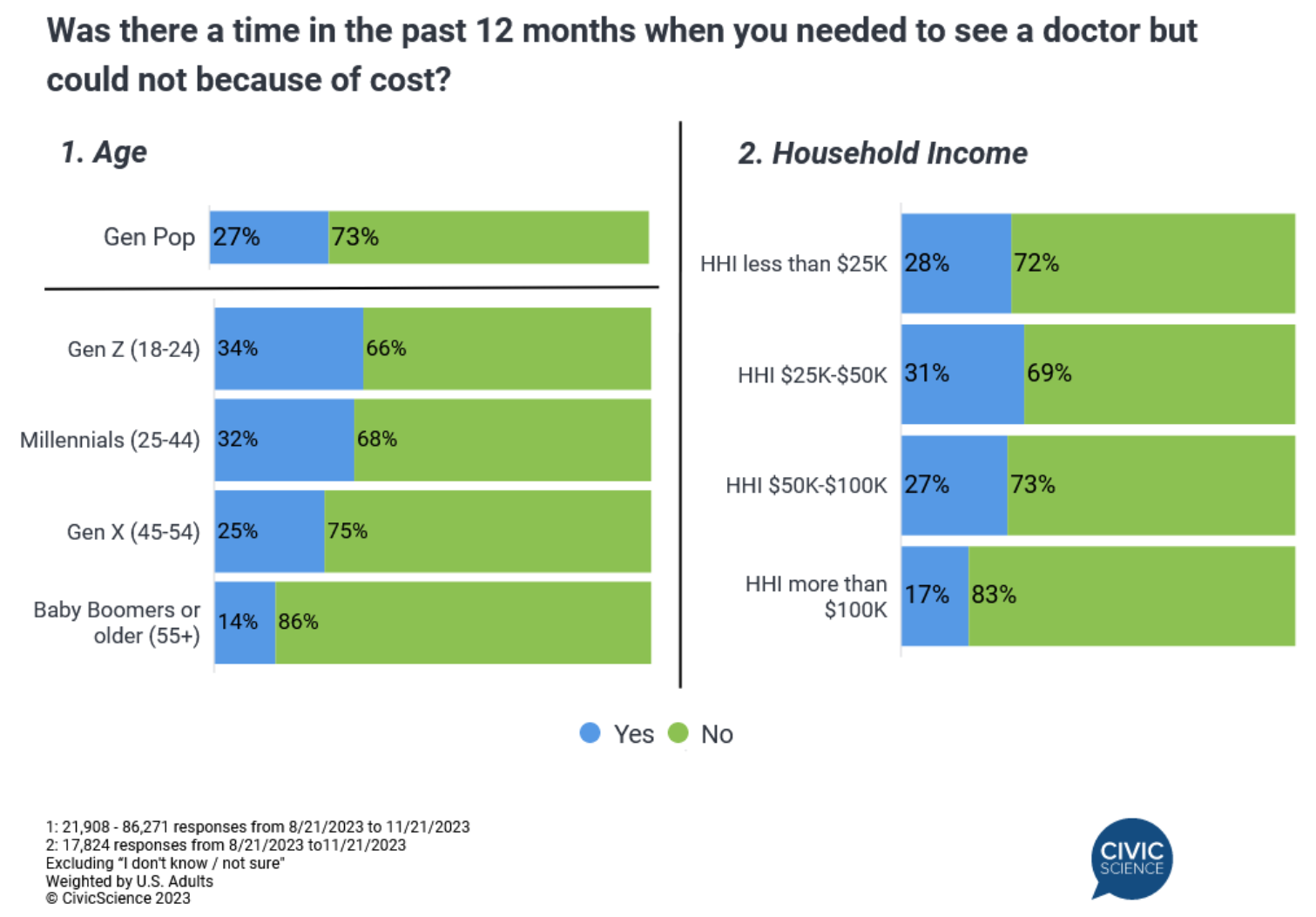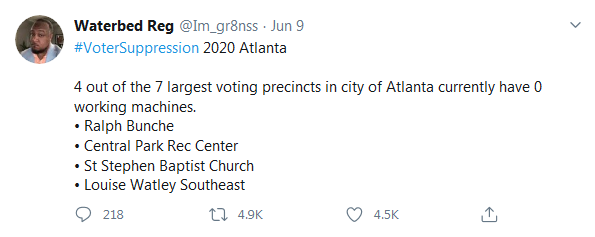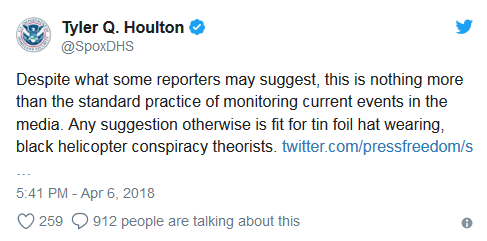The Daily Escape:

Cypress trees, Lake Verritt, LA – November 2023 photo by Rick Berk Photography. Note the egret in the background.
For today’s Wake Up Call, we return to a staple of yesteryear, some hot links that caught Wrongo’s eye over the past few days.
Wrongo isn’t happy with how the Ukraine War has slipped from the consciousness of America’s media and thereby, from our view. Saturday’s WSJ offered an intriguing idea with its column, “Does the West Have a Double Standard for Ukraine and Gaza?” (free link). The article makes two excellent points. First, how these two wars have divided the world. Here’s a view of the division:

From the WSJ: (emphasis by Wrongo)
“Outrage and political mobilization have become subordinated to geopolitical allegiances—a selective empathy that often treats ordinary Ukrainians, Palestinians and Israelis as pawns in a larger ideological battle within Western societies and between the West and rivals such as China and Russia.”
Second, the article concludes by saying that the main difference between the two wars is that the Israeli-Palestinian conflict, with all its complexities, lacks the moral clarity of the Ukrainian resistance to Russia. They quote British lawmaker Alex Sobel:
“There is no moral justification for the Russian invasion. Zero. It’s just about Russian imperialism….But in Israel and Palestine, it’s about the fact that there are two peoples on a very small amount of land, and political and military elites on both sides are unwilling to settle for what’s on offer.”
Yes, America may have the moral high ground in both cases, and views can differ on how both wars are being waged. But as the article says in its second paragraph:
“The Russian invasion of Ukraine in February 2022 was unprovoked, while Israel sent troops into Gaza because of a mass slaughter of Israeli civilians…”.
Make of the article what you will, but it’s important to think through why you (like Biden) think both wars are morally equivalent.
Link #2 is apropos of the COP28 conference now underway in Dubai. Grist Magazine has an article: “Where could millions of EV batteries retire? Solar farms.” As solar energy expands, it’s becoming more common to use batteries to store the power as it’s generated and transmit it through the grid later. One new idea is to source that battery back up at least in part from used electric vehicle batteries:
“Electric vehicle batteries are typically replaced when they reach 70 to 80% of their capacity, largely because the range they provide at that point begins to dwindle. Almost all of the critical materials inside them, including lithium, nickel, and cobalt, are reusable. A growing domestic recycling industry, supported by billions of dollars in loans from the Energy Department and incentives in the Inflation Reduction Act, is being built to prepare for what will one day be tens of millions of retired EV battery packs.”
More:
“Before they are disassembled…studies show that around three quarters of decommissioned packs are suitable for a second life as stationary storage.”
Apparently there are already at least 3 gigawatt-hours of decommissioned EV battery packs sitting around in the US that could be deployed, and that the volume of them being removed from cars is doubling every two years.
Link #3 also shows the impact of the Inflation Reduction Act. Wolf Richter writes that:
“In October, $18.5 billion were plowed into construction of manufacturing plants in the US ($246 billion annualized), up by 73% from a year ago, by 136% from two years ago, and by 166% from October 2019.”
More:
“The US is the second largest manufacturing country by output, behind China and has a greater share of global production than the next three countries combined, Germany, Japan, and India.”
All of this construction spending will take time to turn into production. When these new plants are up and running and producing at scale, manufacturing’s share of US GDP will rise. And much of the new construction is happening in fly-over America, which can use the help.
Finding factory workers in sufficient numbers to support the new capacity will be a key. America has energy in abundance and has robotic manufacturing. So pulling production from overseas with fewer workers needed will be a giant plus for the US.
Link #4 is a downer. Civic Science says in this week’s 3 things to know column, that “Nearly 3 in 10 Americans say they have had to forgo seeing a doctor in the past year due to costs.” Here’s their chart”:

Civic Science says that 12% of US adults have had to miss or make a late payment on medical bills in the last 90 days, a two percentage point increase over September 2022.
A far larger percentage of Americans – 27% of the general population and about 30% of respondents under 55 years old or with an annual household income under $100,000 – report they could not go to a doctor in the past 12 months because they could not afford the cost. Gen Z adults and households making between $25K-$50K are more likely to have held off seeing a doctor due to cost (34% and 31% respectively).
We all know that medical costs have continued to rise and that medical debt is the leading cause of personal bankruptcy in the US. If Congress was really interested in helping provide for the general welfare, they would deal with this out of control problem.
Time to wake up America! There’s plenty going on that isn’t getting visibility in the mainstream media or on social media. You have to cast your net widely to be on top of the good and bad happening in the US.
To help you wake up, we turn to Shane MacGowan, frontman for the Irish group the Pogues who died last week. He left behind a body of work that merged traditional Irish music and punk rock. He wrote many songs that could easily be mistaken for traditional Irish tunes including this one, which was also used as the music for wakes by the Baltimore Police Department in the great, great HBO series, “The Wire“. Here’s “The Body Of An American” from their 1986 album, “Poguetry in Motion”:
RIP Shane.














